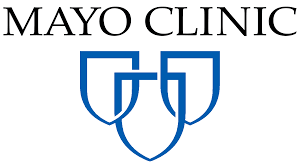Keloids
Keloids
Understanding, Treating, and Preventing These Abnormal Scars
Keloids are a type of abnormal scar that can develop after an injury or surgery. Unlike normal scars, keloids grow beyond the boundaries of the original wound and can become thick, raised, and discolored. They can be itchy, painful, and unsightly, and they can affect anyone regardless of age, gender, or skin color. In this article, we’ll explore what keloids are, what causes them, how they’re treated, and how they can be prevented.
What Are Keloids?Keloids are a type of hypertrophic scar that occurs when the body produces too much collagen during the healing process. Collagen is a protein that gives skin its strength and flexibility, but when there’s an overproduction of collagen, it can result in a raised scar that extends beyond the original wound. Keloids can be smooth or rough, shiny or dull, and they can vary in color from pink to red to brown.
Keloids are most commonly found on the chest, shoulders, upper back, and earlobes. They can also develop on other parts of the body, such as the arms, legs, face, and neck. Keloids can range in size from a few millimeters to several centimeters in diameter, and they can continue to grow over time.
What Causes Keloids?The exact cause of keloids is not fully understood, but it’s believed to be related to a combination of genetic and environmental factors. Some people may be more prone to developing keloids due to their genetics, while others may develop them as a result of an injury or surgery.
Keloids can occur after any type of injury to the skin, including cuts, burns, acne, tattoos, piercings, and surgical incisions. They’re more likely to occur in people with darker skin tones and in areas where there’s a lot of tension on the skin, such as the chest and shoulders.
How Are Keloids Treated?Keloids can be treated in a variety of ways depending on their size, location, and severity. Treatment options include:
- Corticosteroid injections: These injections are given directly into the keloid to reduce inflammation and flatten the scar.
- Cryotherapy: This involves freezing the keloid with liquid nitrogen to destroy the abnormal tissue.
- Laser therapy: This uses a laser to break down the scar tissue and stimulate collagen production.
- Surgical removal: This involves cutting out the keloid and stitching the skin back together. However, this method has a high risk of recurrence.
-
Radiation therapy: This involves using low-dose radiation to reduce scar tissue formation.
-
Silicone sheets or gels: These are applied directly to the keloid to flatten and soften it over time.
- Pressure therapy: This involves applying pressure to the keloid using a special bandage or compression garment.
In some cases, a combination of these treatments may be used to achieve the best results.
Can Keloids Be Prevented?While keloids can’t always be prevented, there are steps you can take to reduce your risk of developing them:
- Avoid unnecessary piercings and tattoos.
- Avoid elective surgery if possible.
- Keep wounds clean and covered until they’re fully healed.
- Use sunscreen on scars to prevent discoloration.
- Avoid picking at scabs or acne lesions.
- Use pressure therapy or silicone sheets on scars as soon as they form.
- Treat acne promptly to prevent scarring.
- Maintain a healthy diet and lifestyle to promote healing.
- Avoid wearing tight clothing or accessories that can rub against the skin.
-
Seek treatment for keloids as soon as they start to form to prevent them from getting worse.
Videos
Keloids
Keloids are an abnormal growth of scar tissue that forms at the site of skin injury. They often develop after a wound has healed and can continue to grow larger than the original injury. While keloids can form anywhere, one common area is the ear (keloids ear), often following ear piercing or trauma.
Keloids are often raised, lumpy, or ridged areas of skin that are usually pink or purple. They can be sensitive or itchy, but they are not usually harmful to health. The primary concern with keloids is aesthetic, as they can grow quite large and be noticeable. Keloids ear are particularly visible if they occur following an ear piercing.
The exact cause of keloids is unknown, but they are thought to be due to an overactive response by the body to injury. When the skin is broken, it usually heals by forming a scar. However, in some people, the scar tissue keeps forming even after the wound has healed, leading to a keloid. Some people may be genetically predisposed to developing keloids.
It’s important to note that any form of skin injury can lead to a keloid in people prone to keloids. This includes not just surgical wounds, but also minor injuries from ear piercing (leading to keloids ear), acne, chickenpox, or even minor scratches
A common myth about keloids is that they can become cancerous – this is not true. Although keloids are a type of skin growth, they are benign (non-cancerous).
Another myth is that anyone who gets a skin injury will develop a keloid. In reality, keloids are more common in people with darker skin, and not everyone who experiences a skin injury will develop a keloid.
Finally, a prevalent myth regarding keloids ear is that only multiple or heavy ear piercings result in keloids. In fact, even a single piercing can lead to a keloid in susceptible individuals.
Treatments for keloids aim to flatten and reduce the size of the scar, relieve any symptoms like itchiness or discomfort, and improve the appearance of the scar.
Options for treatment include steroid injections into the keloid, laser treatment to reduce redness, freezing treatment using liquid nitrogen, and surgical removal. There are also silicone sheets and gels that can be applied to keloids. For keloids ear, a combination of surgical removal and subsequent steroid injections is often effective.
How to Prevent KeloidsPreventing keloids can be challenging because they often form after the skin is injured, and it’s not always possible to prevent injuries. However, if you know you’re prone to keloids, it’s advisable to avoid elective procedures like ear piercing or tattoos that can injure the skin and potentially lead to keloids ear.
If you get a skin injury, early treatment and proper wound care can help reduce the risk of keloids. This includes keeping the wound clean, using antibiotic ointment, and covering it with a bandage.
Even with prevention efforts, some people may still develop keloids. In these cases, it’s crucial to consult with a Board-Certified Dermatologist, like Dr. Sullivan or dermatologist to explore treatment options. These may include the use of pressure earrings after an ear piercing to prevent keloids ear or injectable treatments immediately after wound healing to prevent keloid formation.
In conclusion, while keloids can be a cause of aesthetic concern and discomfort, there are various treatment options available. Understanding how to prevent keloids, especially after procedures like ear piercing, can significantly reduce their incidence.
For More Information:
Keloids (AAD) or Keloids.FAQs About Keloids
Keloids are a type of abnormal scar that grows beyond the boundaries of the original wound and can become thick, raised, and discolored.
The exact cause of keloids is not fully understood, but it's believed to be related to a combination of genetic and environmental factors.
Anyone can develop keloids, but they're more common in people with darker skin tones and in areas where there's a lot of tension on the skin.
Keloids can be treated with corticosteroid injections, cryotherapy, laser therapy, surgical removal, radiation therapy, silicone sheets or gels, and pressure therapy.
While keloids can't always be prevented, steps can be taken to reduce the risk of developing them, such as avoiding unnecessary piercings and tattoos and keeping wounds clean and covered until they're fully healed.
Keloids are not dangerous but can be itchy, painful, and unsightly.
Keloids do not go away on their own but may become less noticeable over time.
Keloids have a high risk of recurrence after treatment.
Makeup can help conceal keloids but won't make them go away.
There are no proven home remedies for treating keloids, but pressure therapy and silicone sheets or gels may help flatten and soften them over time.





